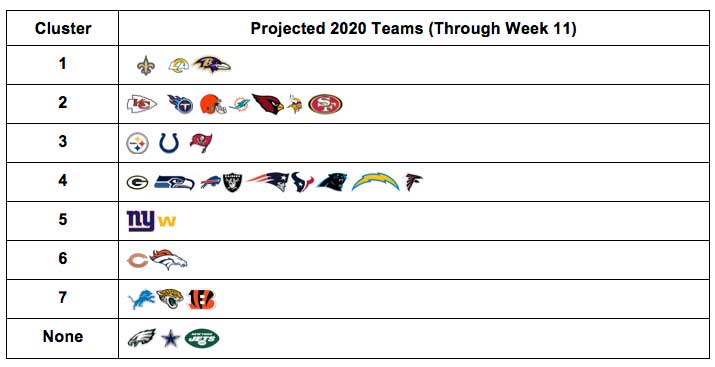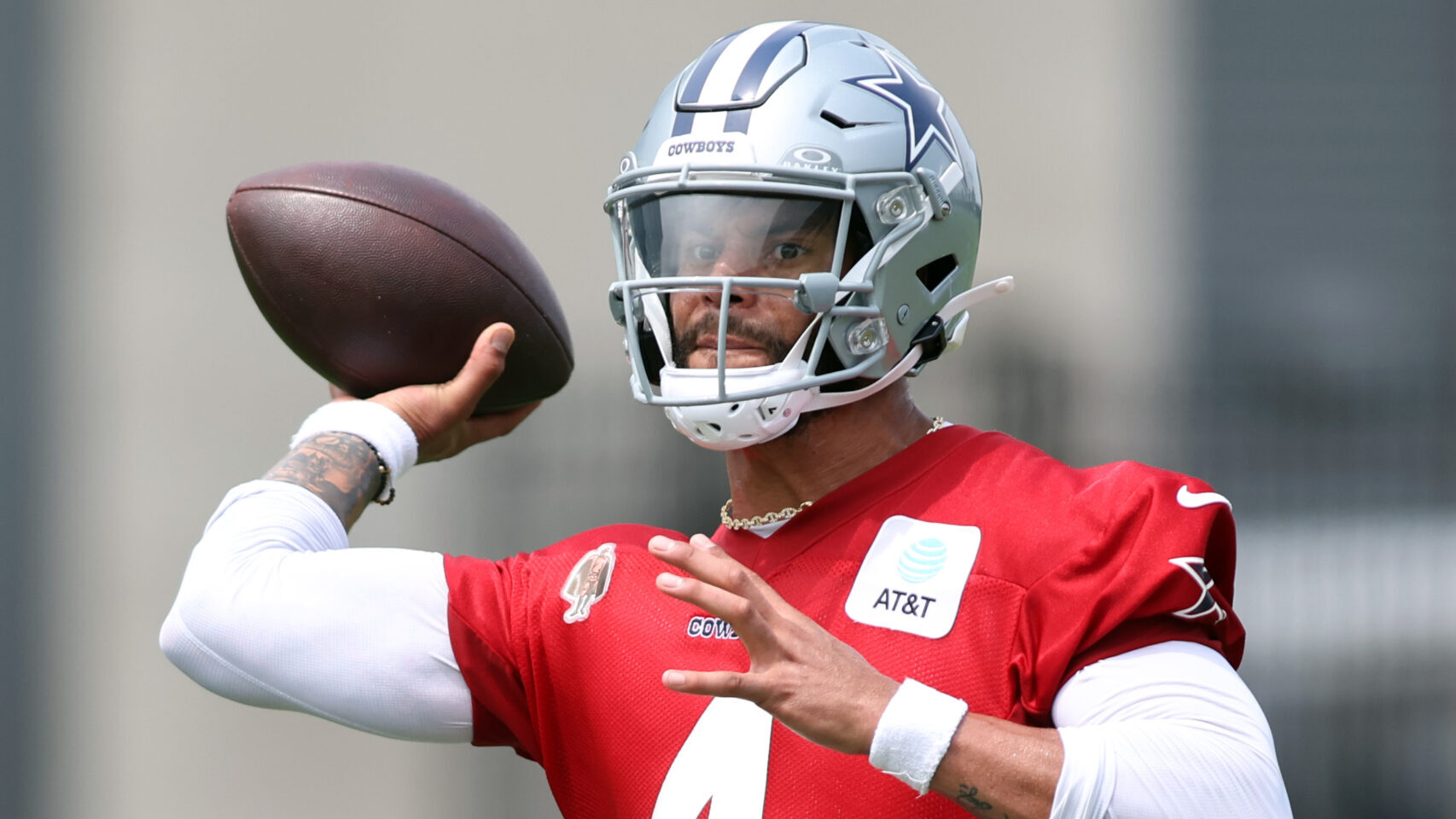Analysis
12/2/20
3 min min read
The 7 Traits of Highly Effective NFL Playoff Teams

Do playoff teams have similar characteristics? With so many facets of the game, NFL teams over the years have adopted many different approaches in the pursuit of a postseason berth. To identify which strategies have resulted in reaching the playoffs, teams from the past 10 seasons were clustered by similar statistics.
This introduction will explain how the analysis was conducted, and includes links at the bottom to find the statistical analysis of the different clusters found through the study.
Methods:
Clustering is a method by which different things can be grouped by similar characteristics. For example, if given information about different animals and told one had gills and lived underwater, while the other had feathers and lived in trees, you might group the first animal with other fish and the second with other birds. This same concept can be applied to football teams, except instead of using physical attributes we can group them by their statistics.
Clustering looks at each statistic for the different teams and compares them to find similarities and create groups. This season, the Buccaneers and Ravens may be similar because of their staunch defenses, but very different based on their number of rushing yards. Clustering compares teams in this way based on each statistic and creates groups of teams that are most similar to each other.
Through k-means clustering using principal component analysis of data from NFLfastR, seven groups of NFL teams were identified. To explain how the teams in these groups were similar to each other and different from teams in the other clusters, the teams were ranked based on a variety of statistical measures comprising many aspects of both offensive and defensive performance. To account for outliers, the measurement for ranking was the 25th percentile for each cluster, meaning that 75% of the teams in that group had at least that high of measure. For example, if the 25th percentile for passing touchdowns in a cluster is 30, it means that 75% of the teams in that cluster threw for at least 30 touchdowns. For stats that negatively affect a team, such as interceptions thrown, the rankings were flipped, so if the 25th percentile for interceptions in a cluster is 10, it means that 75% of the teams in that group threw 10 interceptions or fewer.
If these clusters were just random groups of teams, each group’s 25th percentile measurement would be about equal, and would be around the 25th percentile for the entire population, or all of the teams in all of the clusters. Basically, if a team ranks above the 25th percentile for a stat, it is better than average at that stat, while lower than 25th percentile would mean that it is worse than average.
Results:
Below are the seven distinct groups found by clustering. The characteristics of each cluster, and some of the interesting teams contained within them, will be further explored in the articles linked below.
- Teams with a dominant defense and good rushing offense
- Efficient offensive teams with opportunistic defenses
- High-powered passing teams with aggressive defenses
- Elite passing teams with mediocre defenses
- Run-heavy teams with elite pass rush
- Teams with excellent pass defense but little else
- Inefficient passing teams who lose the turnover battle

Takeaways & Conclusion
By clustering NFL teams, several distinct pathways to the playoffs were found. Defensive performance was found to have the largest impact on a team’s success, and when married with a dominant run game or efficient passing attack, produces playoff teams at an extremely high rate.
On the other hand, poor run defense, sack margin, and turnover margin can be detrimental to a team’s playoff chances, as evidenced by the final two clusters. 26 teams did not fit in any of the seven groups discussed, and they all failed to reach the postseason.
When making team-building decisions, having a strong defense seems to be most conducive to success, whether preventing yardage or creating turnovers. If building an elite defense is not feasible, passing offenses have shown to be more successful, but defense will still play a defining role in a team’s potential.
Follow the links below to learn more about each cluster, including their characteristics, prominent teams contained within, and some teams from the 2020 season that could end up in these clusters at the end of the season.
Read on to find out which team-building strategies are most conducive towards building a successful NFL playoff team.
The First Cluster: Dominant Defense and Run Game
The Second Cluster: Efficient Offense with Opportunistic Defense
The Third Cluster: High-Powered Passing with Solid Defense
The Fourth Cluster: Elite Passing with Mediocre Defense
The Fifth Cluster: Pounding the Rock with Elite Pass Rush
The Sixth Cluster: All Defense
The Final Cluster: Inefficient Passing and Turnovers







